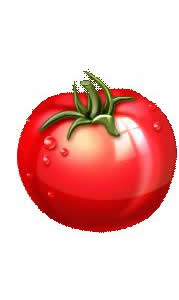 Saving Garden Seeds - September 26, 2012 Jeff Schalau, Agent, Agriculture & Natural Resources University of Arizona Cooperative Extension, Yavapai County Many gardeners save their vegetable seeds from year to year. The real benefit of doing so is to develop and conserve plant genetic traits that are best adapted to your garden environment and climate. Saving seeds saves money on the purchase of new seed each year, provides you with seeds to share with friends, and helps you to appreciate how our ancestors developed and grew their crops each year. Before diving in, it is necessary to understand a little bit about pollination biology before you end up in the deep end of the gene pool. When saving seeds, a viable population must be maintained. The individual plants of a variety or species you grow comprises your seed saving gene pool. To maintain the genetic diversity inherent in a population, it is best to grow an adequate number of individuals of a given variety. Many gardeners save seeds or a few select crops and purchase seeds for the remainder. Most importantly, only healthy, vigorous, productive plants with the characteristics (flavor, color, growing season length, etc.) you value should be saved for seed. Pollination mechanisms for plants are normally divided into two categories: self-pollinated types and cross-pollinated types. Self-pollinating crops have perfect flowers (both male and female parts in the same flower), and they will usually pollinate themselves before opening. Even though this occurs, some pollen can be transferred inadvertently to an adjacent variety. To avoid this, you can separate varieties by a few rows of another crop. Cross-pollinated crops are naturally crossed by either insect-borne or wind-borne pollen. Therefore, isolation distances between different varieties of the same crop are crucial to insure desired varietal purity. Insect pollinated species should be separated by at least one-quarter mile and may also include a physical barrier. The barrier can be a screen cage that excludes the pollinating insect or a natural barrier such as a forest, hills, etc. Different varieties of peppers should be separated by 500 feet to avoid cross-pollination. Melons, pumpkins, cucumbers, and squash need even more distance - at least a half-mile. Wind pollinated crops, such as corn, cannot be easily isolated using barriers and require a distance of at least one mile between varieties to maintain purity. Biennials require more work and commitment, as they do not send up seed stalks until the second season. Biennials include beets, Brussels sprouts, cabbage, carrots, cauliflower, celery, onions, parsley, parsnips, rutabaga, Swiss chard, and turnips. In the coldest areas, it is recommended that roots be dug in the fall and stored between 32 and 45 degrees F through the winter. Most biennial vegetable crops grown in the mid-elevations of Arizona will overwinter just fine without digging and replanting. Leave hybrid seed production to the seed companies unless you really know what you are doing. Seeds from hybrids produce a mix of offspring, which may have different characteristics than the parents'. Seed from hybrid vine crops are often quite variable, also squashes, cucumbers, melons, and pumpkins can cross-pollinate with other genetically compatible varieties. Unless pollination has been strictly controlled, strange hybrids often result. The most commonly saved seeds by home gardeners are from heirloom tomatoes. Tomato seeds are encased in a gelatinous coating, which prevents them from sprouting inside the tomato. It is easy to save tomato seeds: squeeze the seeds from a fully ripe fruit into a bowl, add water, and let stand at room temperature for about three days. Once fermentation occurs, mold will form on the surface of the water. Add more water, stir, and then gently scrape mold and debris off the top. Repeat until only clean seed remains, and then strain, rinse, and leave the seeds at room temperature until dry. Once you master saving tomato seeds, you might want a greater challenge. Peppers, peas, and beans are also self-pollinating and would be the next step in seed saving. Corn, squash, and other cross-pollinated crops are more challenging, but you could start by growing only one variety of each in your garden and trying to save those. Seed companies often map their locations to minimize the potential for unwanted crosses. The on-line version of this column (see URL below) has several seed saving resources – check them out! Follow the Backyard Gardener on Twitter – use the link on the BYG website. If you have other gardening questions, call the Master Gardener help line in the Camp Verde office at 928-554-8999 Ext. 3 or e-mail us at cottonwoodmg@yahoo.com and be sure to include your name, address and phone number. Find past Backyard Gardener columns or provide feedback at the Backyard Gardener web site: http://cals.arizona.edu/yavapai/anr/hort/byg/. Additional Seed Saving Resources An Introduction to Seed Saving for the Home Gardener, University of Maine. http://umaine.edu/publications/2750e/ Saving Seed, Colorado State University. http://www.ext.colostate.edu/pubs/garden/07602.html Saving Seed Tips, West Virginia University. http://www.wvu.edu/~agexten/hortcult/homegard/seedsavr.htm |